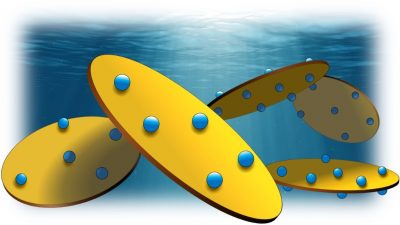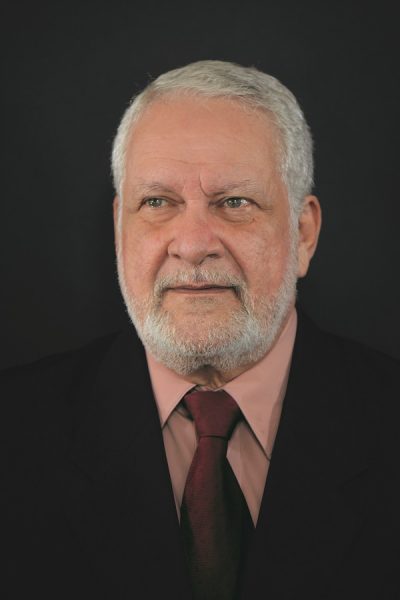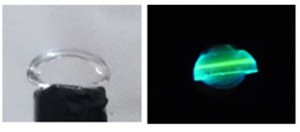[Paper: Reaching Biocompatibility with Nanoclays: Eliminating the Cytotoxicity of Ir(III) Complexes. Malte C. Grüner, Kassio P. S. Zanoni, Camila F. Borgognoni, Cristiane C. Melo, Valtencir Zucolotto, and Andrea S. S. de Camargo. ACS Applied Materials & Interfaces 2018 10 (32), 26830-26834. DOI: 10.1021/acsami.8b10842.]
Nanoclays to overcome toxicity
Working in laboratories of the São Carlos Institute of Physics (IFSC – USP), a scientific team developed a strategy that eliminates the cytotoxicity (ability to destroy cells) of a group of compounds with very interesting photophysical properties for health applications . The study made viable the use of these substances, once toxic, in the study of living organisms and in the diagnosis and treatment of diseases. In addition to eliminating cytotoxicity, the strategy modifies some properties of compounds by adding new functions that can be harnessed for intracellular oxygen sensing and to improve the efficiency of luminescent devices such as OLEDs.
The work was reported in an article recently published in the journal ACS Applied Materials and Interfaces (impact factor 8,097).
It all started in an informal conversation between three postdoctoral fellows linked to IFSC-USP laboratories: Malte C. Grüner and Kassio P. S. Zanoni, both linked to the Laboratory of Functional Materials Spectroscopy (LEMAF), and Camila F. Borgognoni of the Group of Nanomedicine and Nanotoxicology (Gnano). Zanoni had worked with iridium (III) complexes during his doctorate, and wanted to take advantage of some properties of these compounds to use them as photodynamic therapy agents. Such therapy refers to a set of treatments for diseased tissues, such as those affected by cancer, in which an external radiation source is used for the activation at the appropriate time of a compound inserted into the body, which is responsible to destroy the cells that need to be eliminated.
The post-doc Zanoni’s desire, however, came up against the high cytotoxicity of iridium (III) complexes. The postdoc Grüner then had the innovative idea of trying to use laponites (materials he had studied in his doctorate) to inhibit the cytotoxicity of the compounds. From this idea, Grüner and Zanoni carried out the preparation and characterization of the materials in LEMAF, coordinated by Prof. Andrea S. S. de Camargo. At GNano, coordinated by Prof. Valtencir Zucolotto, the post-doc Borgognoni and the student Cristiane Melo were in charge to investigate the interactions of the nanoparticles with the cells.

Strategy and applications

One of the main properties of iridium (III) complexes is their intense luminescence (emission of light not resulting from heat) in a wide range of colors. This feature may be useful for illuminating cells within living organisms in bioimaging techniques, used for both research and for diagnosis and treatment of diseases.
In turn, laponites, which are synthetic nanoclays fully compatible with living tissues, have often been proposed in the scientific literature as nanoplataforms for transporting drugs and other compounds within living organisms. The laponites are about 25 nm in length and only 1 nm in height.
In the work of the IFSC-USP team, a new material was developed as a result of the adsorption of iridium (III) complex molecules on the surface of laponite nanodiscs.
The researchers found in the laboratory (in vitro) the ability of the new material to be absorbed by cells, its luminescence within cells and its low citotoxicity. For this, they used liver cells and observed their interaction with the new nanomaterial, comparing it with the interaction with the pure iridium (III) complex. The results were highly favorable to iridium (III) laponite nanodiscs, which proved to be harmless to the cells, besides presenting good penetration and high luminescence – characteristics that make them very suitable for application in bioimaging techniques.

“In this work, it was demonstrated for the first time that the adsorption of iridium (III) complexes (in general, highly toxic) on the surface of laponite nanodisks is capable to completely extinguish the cytotoxicity of these compounds “, summarizes the post-doc Kassio Zanoni , who in 2017 was the winner of B-MRS Young Researcher Award. “This makes it highly feasible to use previously toxic compounds in cell media without impairing the integrity of the medium and therefore has the potential to expand the research of new biocompatible materials for use in cell mapping, theranostics and photodynamic therapy”, he adds.
According to the authors, the new nanomaterial could act as a photodynamic therapy drug, since, when irradiated with certain types of radiation, it produces a molecule (the singlet oxygen) that acts in the destruction of cancer cells. In this way, the nanomaterial also becomes promising in the field of theranostics, which proposes the combination, on the same platform, of the diagnosis of diseases by bioimaging with its cure through photodynamic therapies.
In addition, the nanomaterial can be used as a sensor to accurately determine the amount of oxygen distributed inside a cell. “As demonstrated in our work, the emission intensity of this nanomaterial is a variable as a function of the concentration of oxygen”, justifies Zanoni.
Finally, the nanomaterial, in the form of a thin nanometric film, could also be applied to organic light-emitting diodes (OLEDs) – devices that are already used, for example, in cellular screens. “This is because the iridium (III) complex adsorbed on laponite aggregates photophysical, photochemical and electrochemical properties that are strategic for the development of more efficient devices”, explains Zanoni.
This research was carried out with funding from The São Paulo Research Foundation (FAPESP).



